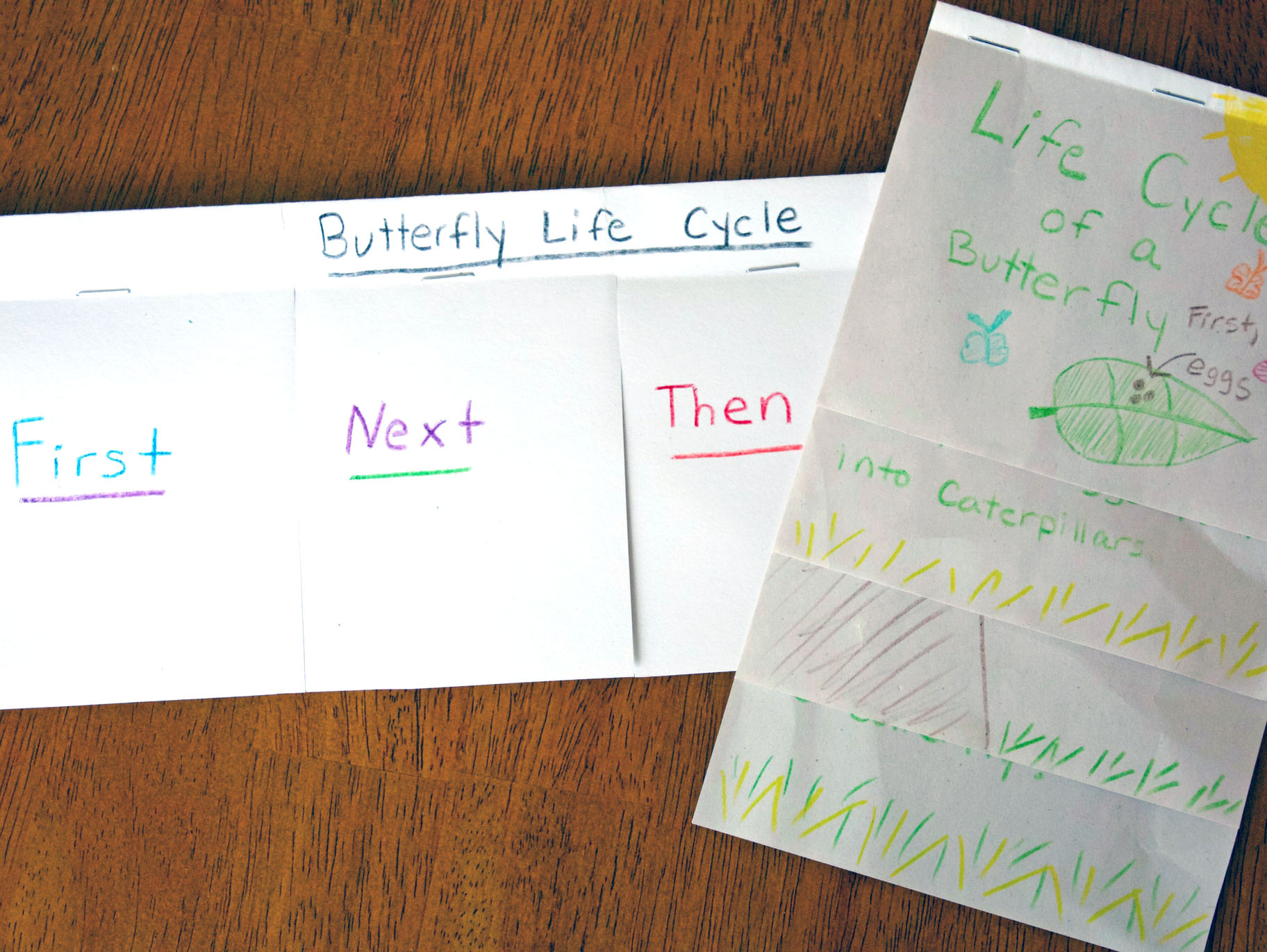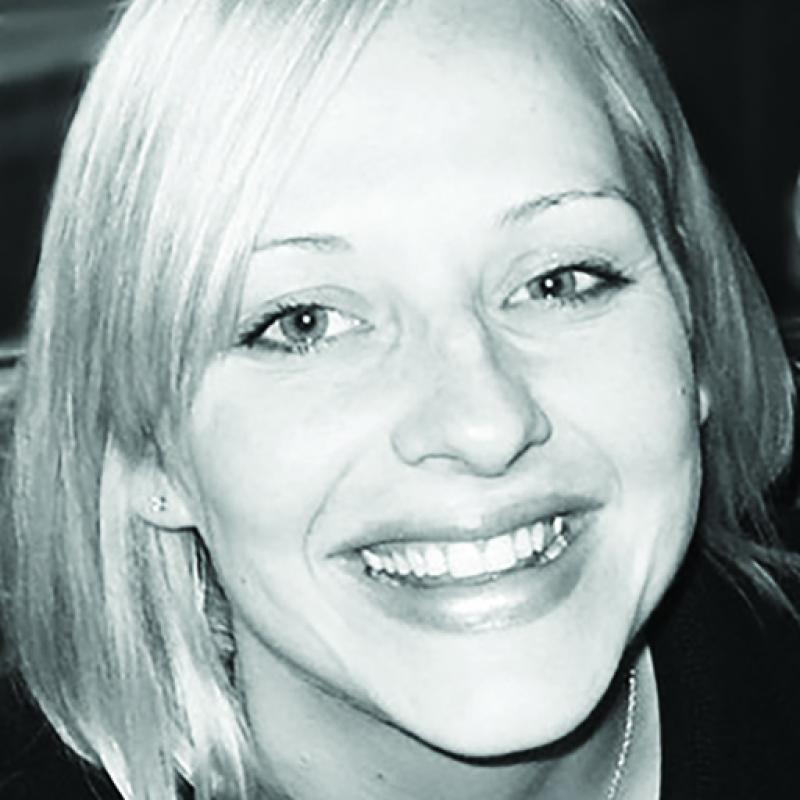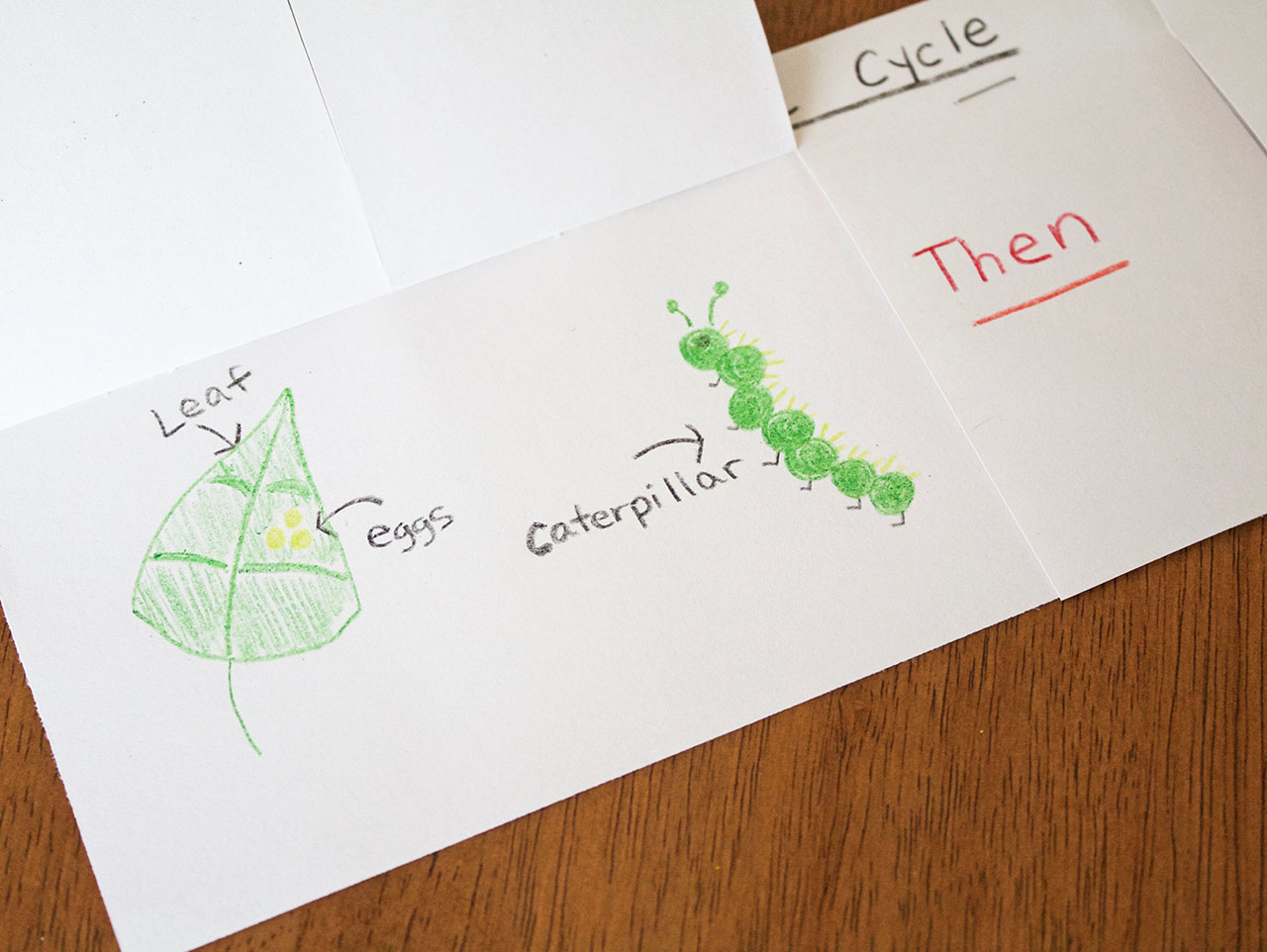
Using a piece of white card stock, cut strips of paper that are 9″ x 12″. Each flip book will need one strip. Fold the 9″ x 12 ” paper lengthwise. You want it to end up being 4.5″ x 12″. Cut 3 slits in the top layer to create 4 pieces that flip up. Cut about ¾ of the way from the top. Add three staples across the top. Have students title their flip book, “Butterfly Life Cycle.” On the first rectangle, students write the word FIRST. When they flip up the rectangle they will draw a leaf with butterfly eggs.
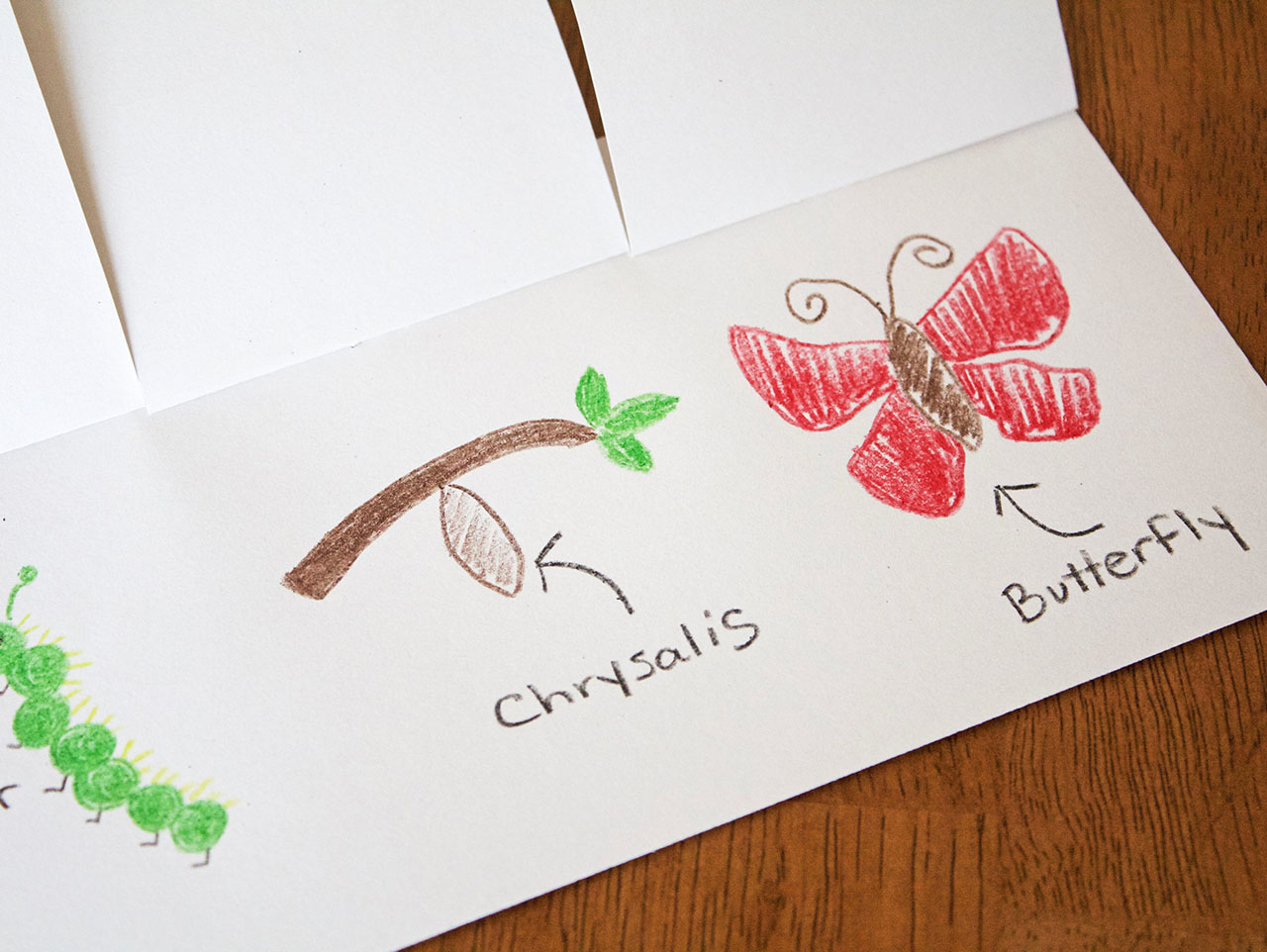
On the second rectangle have the students write NEXT. When they flip up the rectangle they will draw a caterpillar.
For the third rectangle students will write THEN. When they flip up the rectangle they will draw a chrysalis.
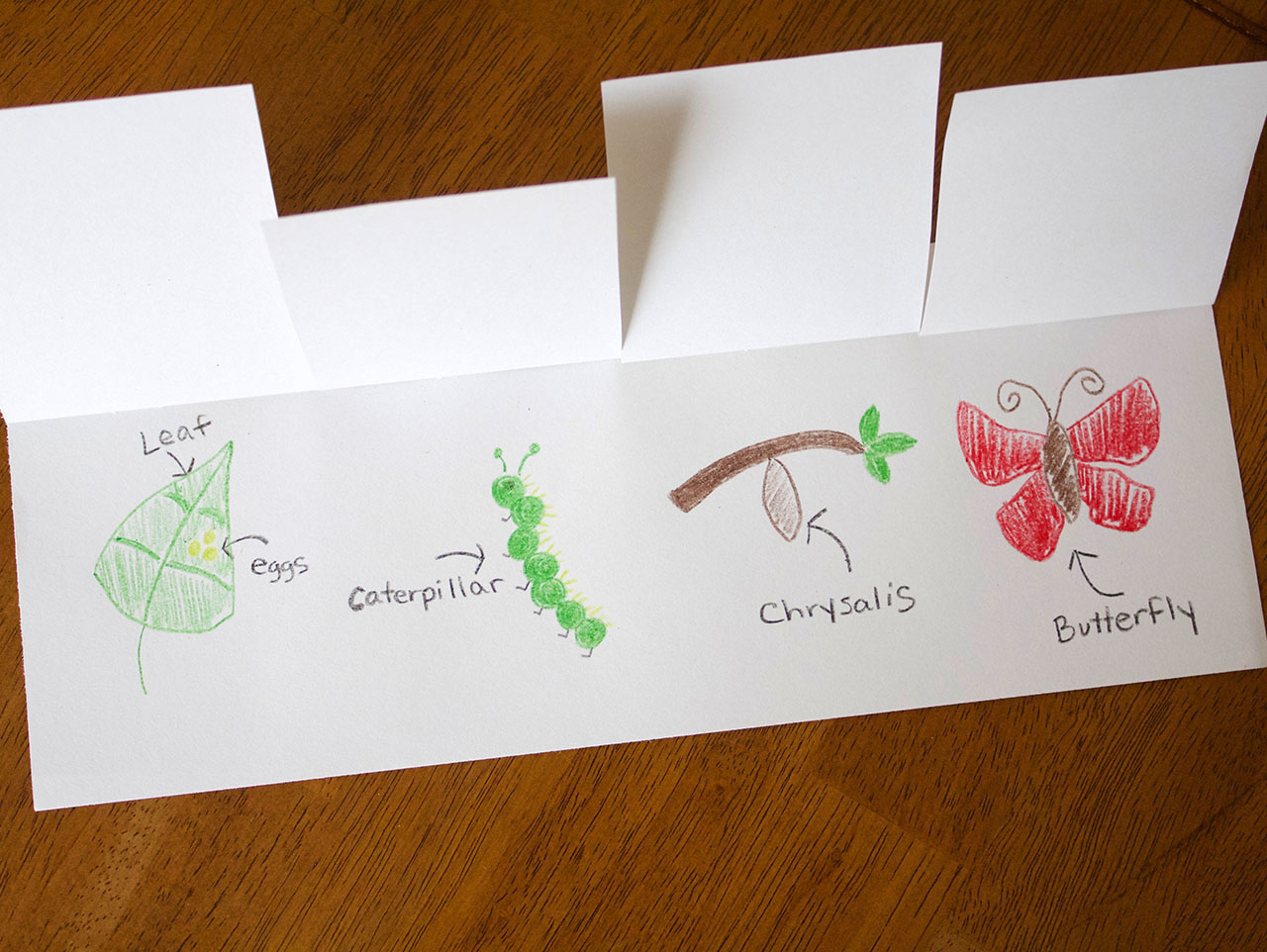
For the last rectangle students will write LAST. When they flip up the rectangle they will draw a beautiful butterfly!
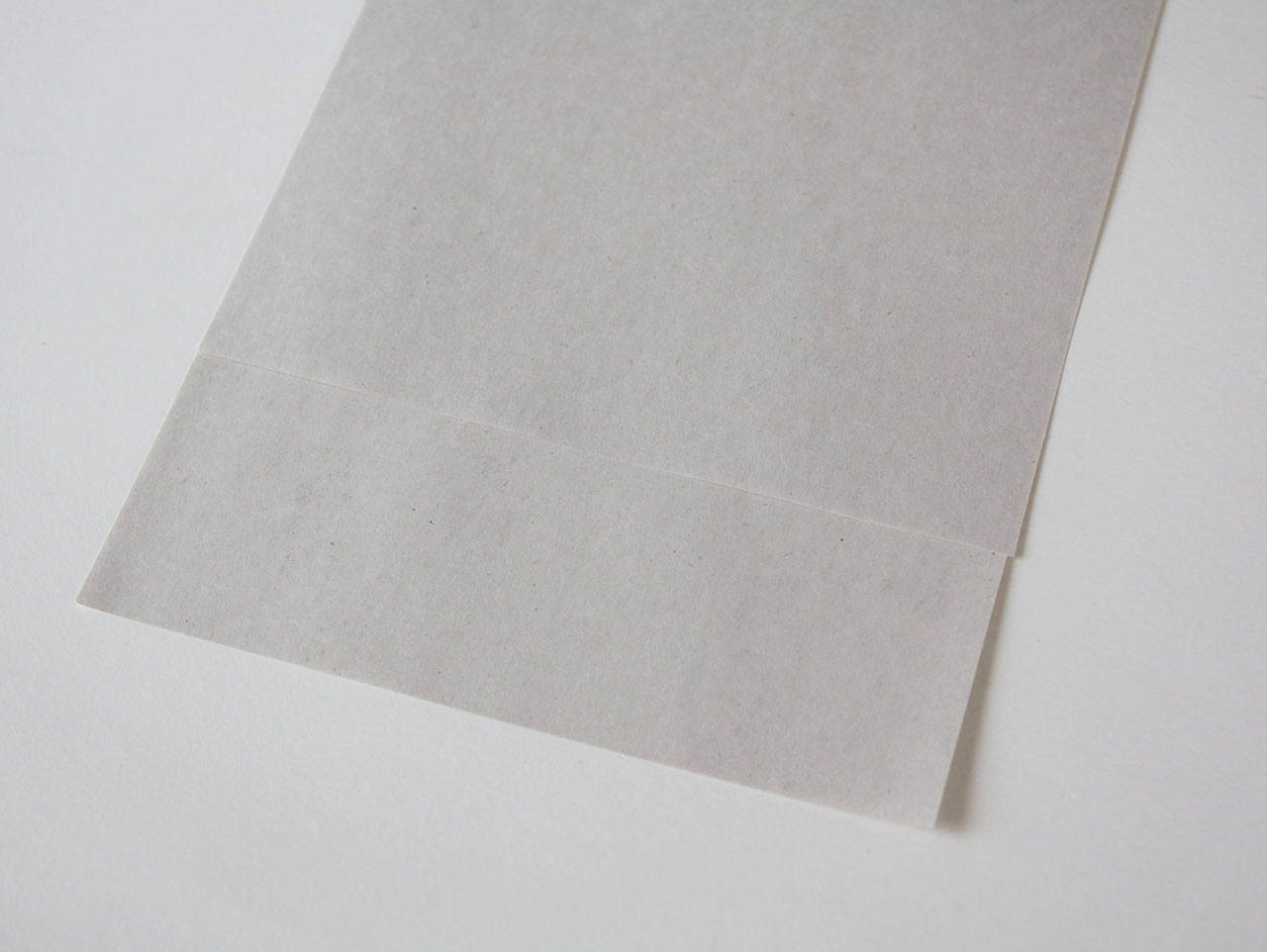
Using the newsprint paper cut strips that are 5″ x 12″. Each flip book will use two strips of newsprint paper.
Lay both pieces of paper together. Pull the top piece up about 1.5″. See photo. Now fold over the layers towards yourself and press down to crease. Staple across the top. You should have 4 pages.
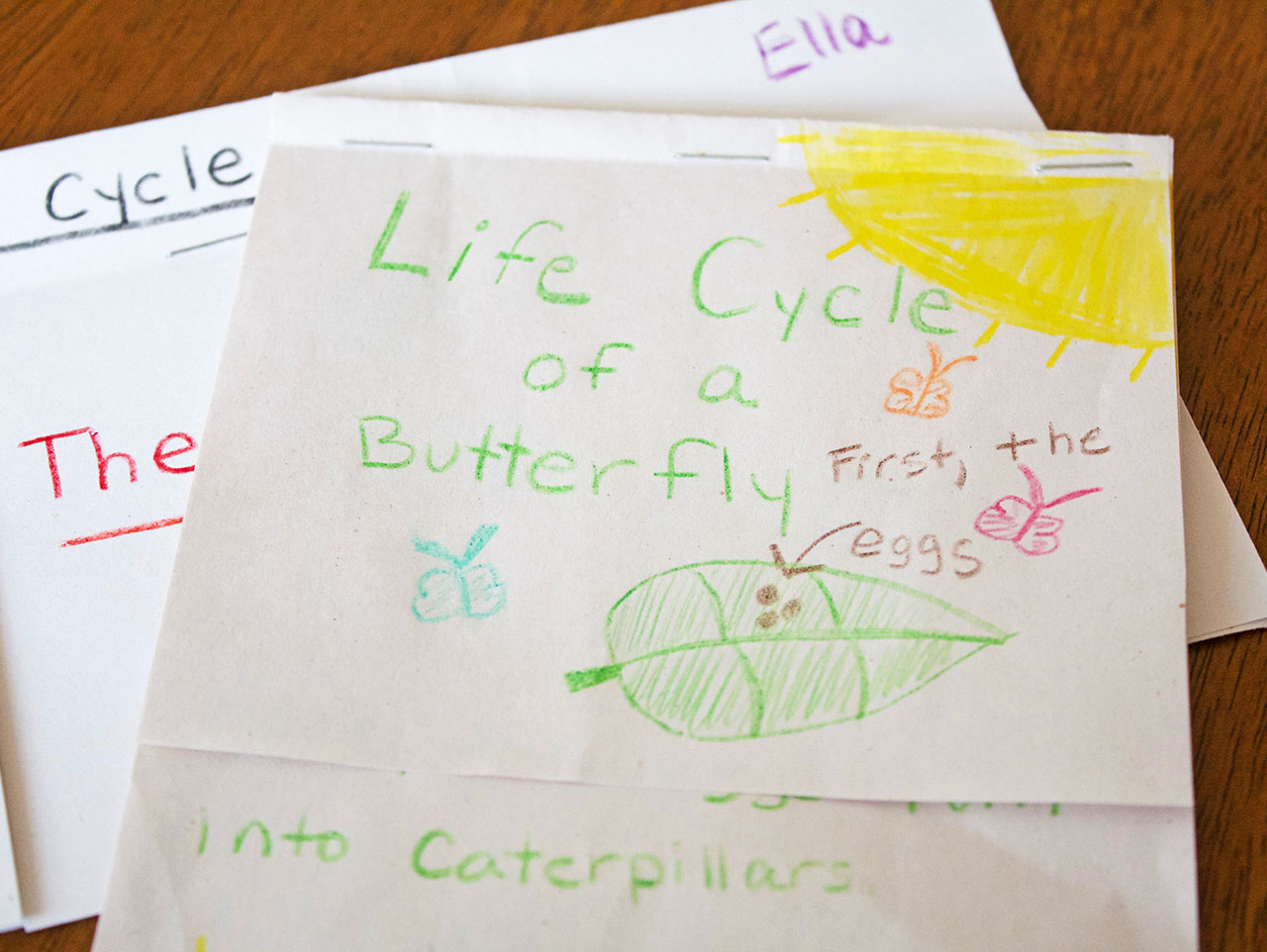
On the first page have your students write the title, “Life Cycle of a Butterfly.” Leave room to draw a leaf with butterfly eggs. Students practice their writing skills by printing, “First, the butterfly lays eggs on a leaf.”
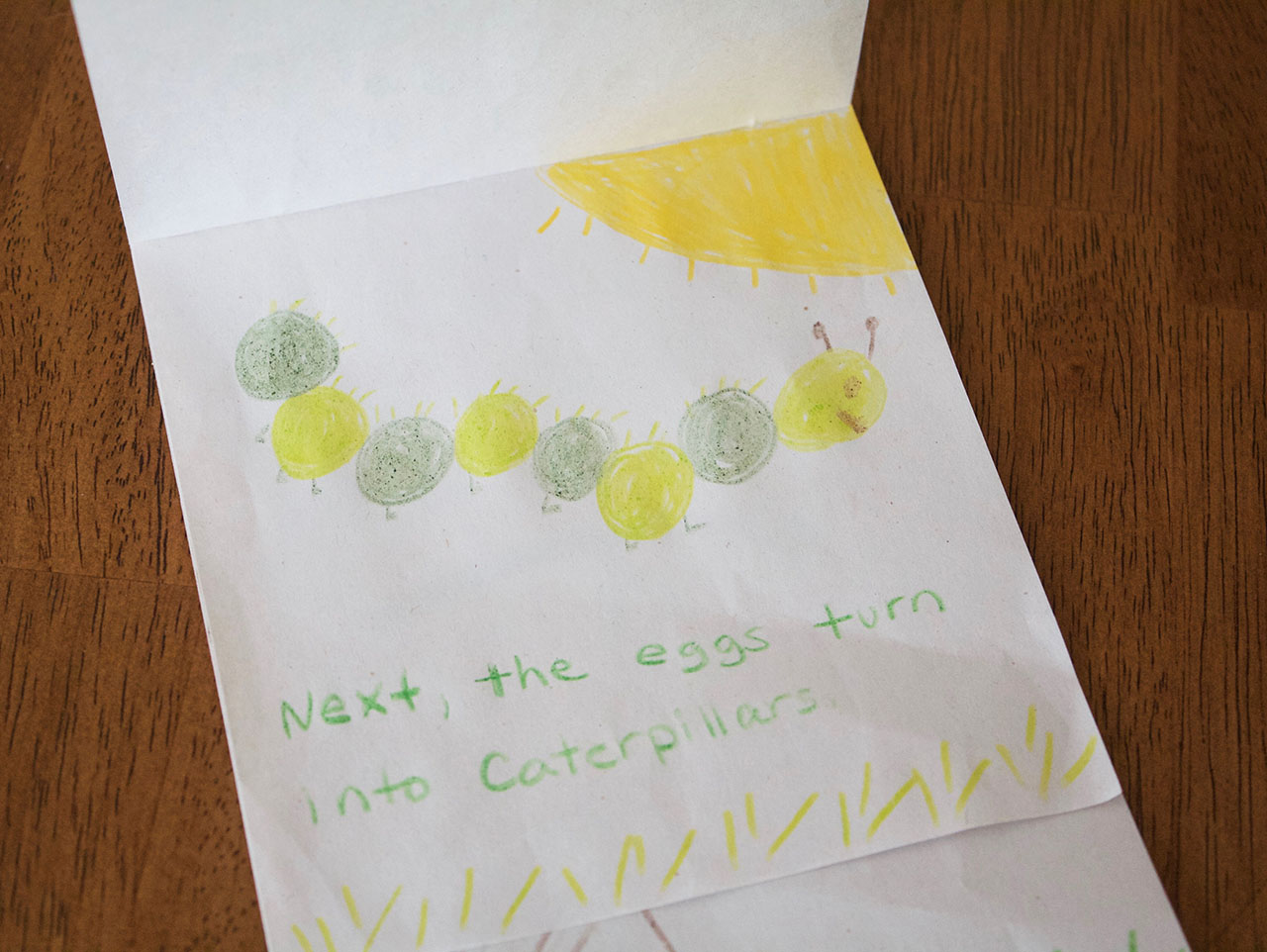
On the second page students draw a caterpillar and write, “Next, the eggs turn into a caterpillar.”
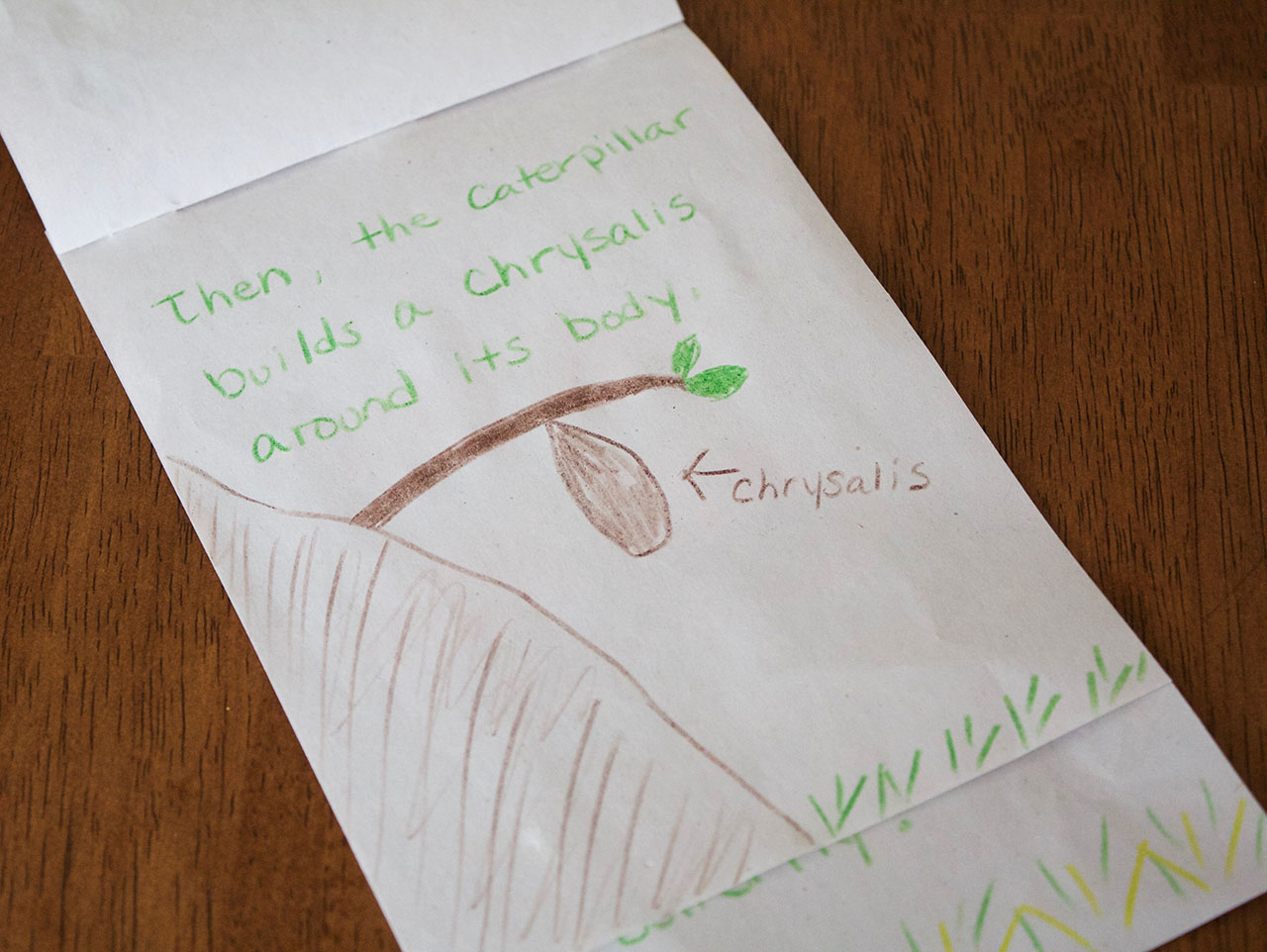
On the third page have the students draw a tree branch with a chrysalis. Have the students write, “Then the caterpillar builds a chrysalis around its body.”
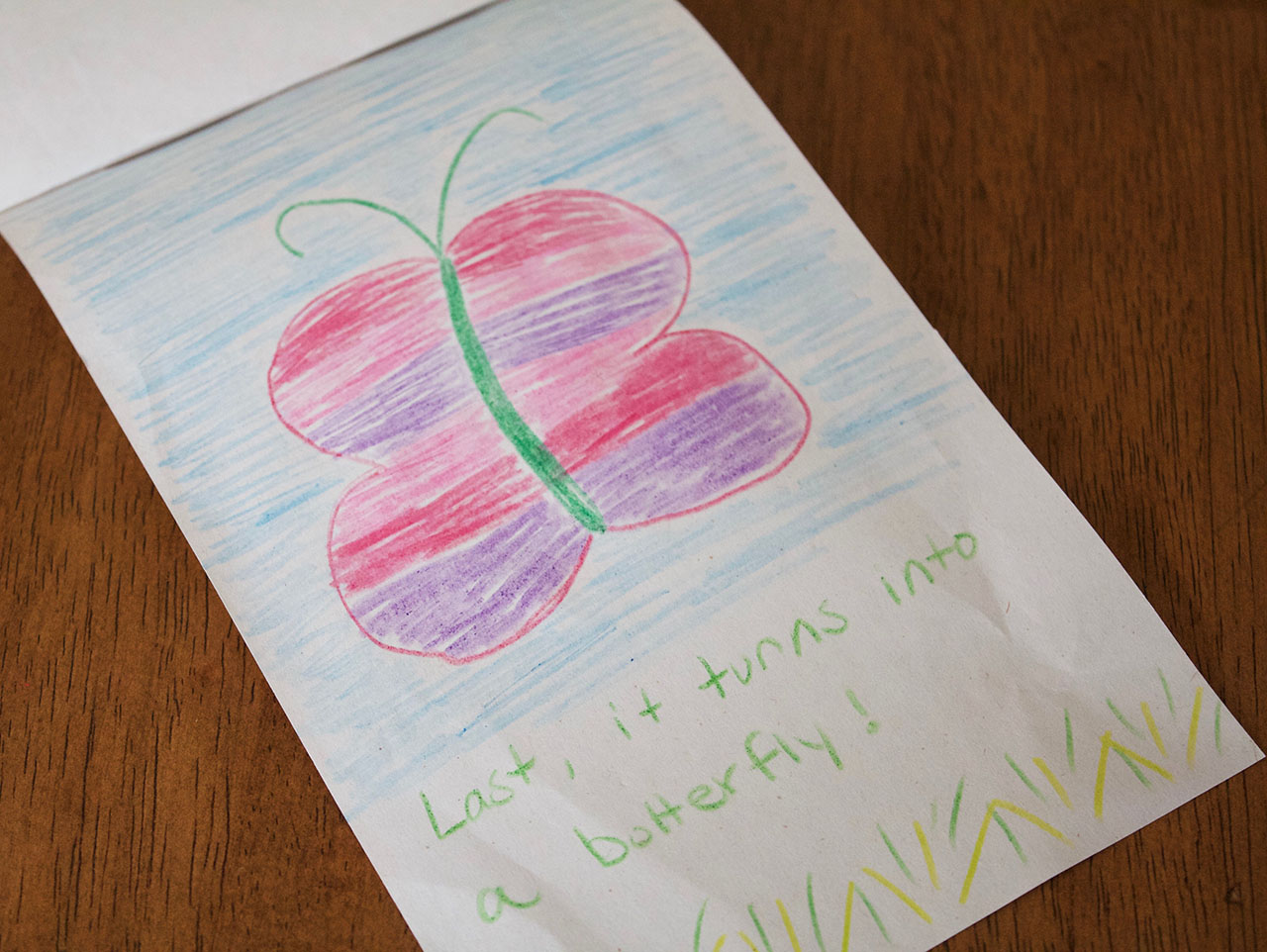
For the last page students draw a beautiful butterfly. Have the students write, “At last it turns into a butterfly!”
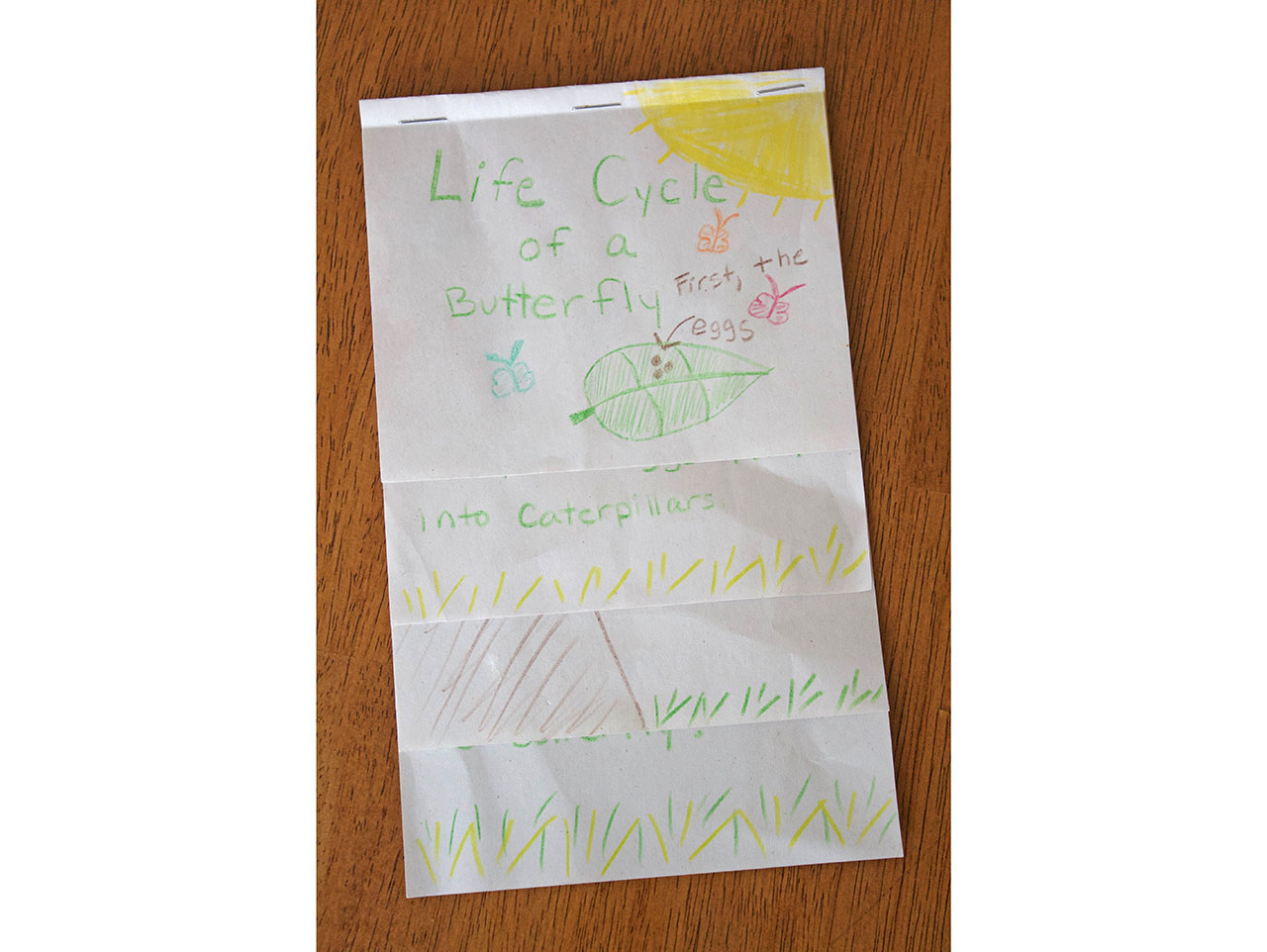
There you have it! What a fun way to teach your students about life science! These books can be used for many animals, and is fun and simple for your class to make a series of them!

Using a piece of white card stock, cut strips of paper that are 9″ x 12″. Each flip book will need one strip. Fold the 9″ x 12 ” paper lengthwise. You want it to end up being 4.5″ x 12″. Cut 3 slits in the top layer to create 4 pieces that flip up. Cut about ¾ of the way from the top. Add three staples across the top. Have students title their flip book, “Butterfly Life Cycle.” On the first rectangle, students write the word FIRST. When they flip up the rectangle they will draw a leaf with butterfly eggs.

On the second rectangle have the students write NEXT. When they flip up the rectangle they will draw a caterpillar.
For the third rectangle students will write THEN. When they flip up the rectangle they will draw a chrysalis.

For the last rectangle students will write LAST. When they flip up the rectangle they will draw a beautiful butterfly!

Using the newsprint paper cut strips that are 5″ x 12″. Each flip book will use two strips of newsprint paper.
Lay both pieces of paper together. Pull the top piece up about 1.5″. See photo. Now fold over the layers towards yourself and press down to crease. Staple across the top. You should have 4 pages.

On the first page have your students write the title, “Life Cycle of a Butterfly.” Leave room to draw a leaf with butterfly eggs. Students practice their writing skills by printing, “First, the butterfly lays eggs on a leaf.”

On the second page students draw a caterpillar and write, “Next, the eggs turn into a caterpillar.”

On the third page have the students draw a tree branch with a chrysalis. Have the students write, “Then the caterpillar builds a chrysalis around its body.”

For the last page students draw a beautiful butterfly. Have the students write, “At last it turns into a butterfly!”

There you have it! What a fun way to teach your students about life science! These books can be used for many animals, and is fun and simple for your class to make a series of them!

